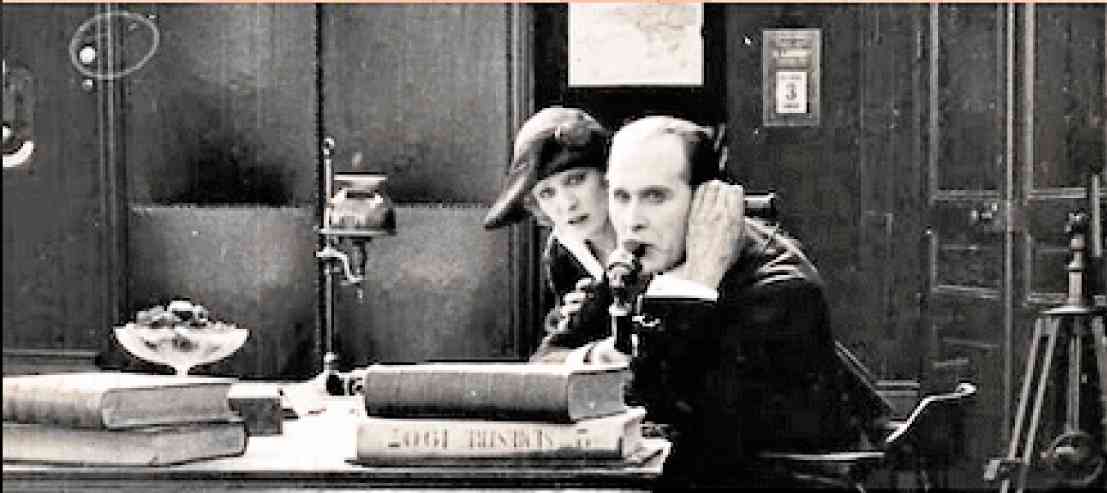Silent films make a comeback through Manila fest
“Everybody goes around with their phones. Most of us end up with our own silent films. This genre, for me, is very much mainstream.”
Thus said Martin Macalintal, audiovisual attaché from the French Embassy in the Philippines, on whether or not silent films are still capable of making a comeback or becoming part of the mainstream consciousness in the age of digital technology.
“The difference now is where you watch the content—either on your phone or on a widescreen,” explained Macalintal during a media gathering to launch the 15th edition of the International Silent Film Festival Manila (ISFFM), which is ongoing until Dec. 3.
The ISFFM will feature six classic silent films from France, Germany, Italy, Japan, Spain and the United Kingdom, as well as nine locally produced short films, all accompanied by original musical scores from local bands and musicians.
The 15th edition is presented by the Japan Foundation, Manila; the Embassy of Italy with the Philippine Italian Association; Instituto Cervantes; British Council in the Philippines; Goethe-Institut Philippinen; the Embassy of France; and the Film Development Council of the Philippines (FDCP). The program is screened online via the FDCP channel (fdcpchannel.ph/isffm2021).

Scene from “Pinocchio”
Reimagining
This year’s theme is “reimagining the past with the present,” reported FDCP chair Liza Diño.
“We want to make sure that silent films will not only make a comeback, but will also remain part of world cinema,” she pointed out.
Ben Suzuki, director of the Japan Foundation, Manila, agreed. He emphasized the importance of continuing the ISFFM, which is the oldest silent film festival in Southeast Asia. In fact, Suzuki’s team hosted the invitational opening ceremony held on Wednesday at the newly renovated Manila Metropolitan Theater, considered Manila’s architectural Art Deco gem built in the midst of the Philippine “Silent era.”
“After passing through a long, dark tunnel as we fought COVID-19, we are now about to enter the next stage of new normal,” said Suzuki. “We believe that the hybrid format will reignite the interest in the Philippines for creative gatherings.”
Suzuki said Japan brought “one of its most important silent films,” titled “Orochi” (Serpent), a 1925 action film by Futagawa Buntarō, with live scoring by the Munimuni band.
“It features the best sword fighting in the history of Japanese cinema. It brought a revolutionary change in the genre,” he beamed.
Instituto Cervantes yesterday screened José Buchs’ 1922 film “Carceleras,” which was followed by a first panel discussion on “How to Watch a Silent Movie,” featuring speakers from Spain, Italy and Japan. The Philippine-Italian Association concluded the day with a screening of the Giulio Antamoro’s “Pinocchio” (1911).

Scene from “The Foreman”
Connected to PH identity
“Filipinos love cinema not just for entertainment but also for history. In many aspects, cinema is very much connected to the identity of the Philippines as a nation,” said Javier Galván, director of Instituto Cervantes. “We are very happy to be part of this movement. For me, the love for silent films is a form of brotherhood in culture.”
Today, the British Council in the Philippines will screen “Dr. Wise on Influenza” (1919). Goethe-Institut Philippinen concludes the day with the screening of Paul Leni and Leo Birinski’s “Das Wachsfigurenkabinett” (The Waxworks, 1924).
On Nov. 27, the Embassy of France, led by Macalintal, will screen “The Foreman.” This is followed by another screening of Buntarō’s “Orochi,” hosted by the Japan Foundation, Manila.
From Nov. 28 to 30, all films will be available “on-demand” on the FDCP channel. Meanwhile, Dec. 1 to 3 will be dedicated to the screening of the nine short films produced with the very first edition of FDCP’s Mit Out Sound International Silent Film Competition.
The following are the nine silent short film entries: Sari Katharyn’s “Ang Tatlong Hambog,” EJ Gagui and Marienel Calma’s “Ing Tianak,” Vahn Leinard C. Pascual’s “Alingasngas Ng Mga Kuliglig,” Racquel De Guzman Morilla’s “Ang Pagsuyo sa Paru-Paro ng Gabi,” Gabriela Serrano’s “Dikit,” Kate Torralba and Jopie Sanchez’s “Ha-Ha-Hambog,” Hector Barretto Calma’s “I Need More Than Tofu and Other Vegetables,” Nikolas Red’s “Putol” (The Cut), and Jose Carlos Soliongco’s “Ang Pagdadalaga ng Dalagang Bukid.” The ISFFM 2021 will culminate with a closing night ceremony, and the awarding for the best productions of the Mit Out Sound competition. INQ
Visit facebook.com/InternationalSilentFilmFestivalManila.